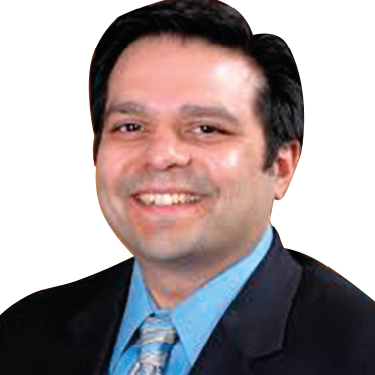
Leslie A. Saxon M.D.
Cardiac Electrophysiologist | Clinical Cardiac Electrophysiology
1520 San Pablo St Suite 1000 Los Angeles CA, 90033About
Dr. Leslie Saxon is a Cardiac Electrophysicist practicing in Los Angeles, CA. Dr. Saxon performs testing procedures on patients hearts electrical system in order to assess timing and abnormalities associated with electrical activities of the heart. Adult Cardiac Electrophysiologists are trained to treat irregular heartbeats, and carry out electrophysiology studies or ablations.
Education and Training
Ross Univ- Sch Of Med & Vet Med- Roseau- Dominica 1985
Ross University School Of Medicine, Roseau, Commonwealth Of Dominica, West Indies 1985
Medical College of Wisconsin
Ross University School of Medicine 1985
Board Certification
Internal MedicineAmerican Board of Internal MedicineABIM
Provider Details
Expert Publications
Data provided by the National Library of Medicine- Long-term His-bundle pacing and cardiac function.
- Ventricular contraction abnormalities in dilated cardiomyopathy: effect of biventricular pacing to correct interventricular dyssynchrony.
- Heart failure management using implantable devices for ventricular resynchronization: Comparison of Medical Therapy, Pacing, and Defibrillation in Chronic Heart Failure (COMPANION) trial. COMPANION Steering Committee and COMPANION Clinical Investigat
- Rate smoothing with cardiac pacing for preventing torsade de pointes.
- Cardiac resynchronization: a cornerstone in the foundation of device therapy for heart failure.
- Effects of long-term biventricular stimulation for resynchronization on echocardiographic measures of remodeling.
- Arrhythmias associated with dilated cardiomyopathy.
- Heart failure and Implantable Cardioverter Defibrillator (ICD) therapy: Update and perspective on current primary prevention trials.
- The MIRACLE trial: an electrophysiologist's perspective.
- Ventricular resynchronization: a promising therapy for heart failure.
- Isolated bundle branch block and left ventricular dysfunction.
- Noninvasive assessment of the biventricular pacing system.
- Cardiac-resynchronization therapy with or without an implantable defibrillator in advanced chronic heart failure.
- Improvement in heart rate turbulence as a measure of response to beta-blocker therapy for heart failure.
- A comparison of cardiac resynchronization by sequential biventricular pacing and left ventricular pacing to simultaneous biventricular pacing: rationale and design of the DECREASE-HF clinical trial.
Treatments
- Anxiety
- Heart Disease
- Heart Failure
- Cardiomyopathy
- Pain
- Vascular Disease
Fellowships
- U.C.L.A. Medical Center 1991
Leslie A. Saxon M.D.'s Practice location
Practice At 1520 San Pablo St Suite 1000
1520 San Pablo St Suite 1000 -Los Angeles, CA 90033Get Direction
Ucsf Dept of Medicine
1441 E Lake Av Usc Nors Cncr Hos -Los Angeles, CA 90033Get Direction
Leslie A. Saxon M.D.'s reviews
Write ReviewPatient Experience with Dr. Saxon
Recommended Articles
- Reasons Why You Would Need an Ablation
What is catheter ablation?This is a surgical procedure that is used to correct heart irregularities. It involves the use of radio frequency energy to get rid of the heart tissues that cause irregular and rapid heartbeats. It can also be referred to as radio frequency ablation, and it has proved to...
- What Is an Arrhythmia?
An arrhythmia is the violations of the frequency, rhythm, and sequence of heart contractions.Why do arrythmias occur?...
- What Is a Bubble Study?
What is a bubble study?A bubble study is a type of echocardiogram, which is the ultrasound of the heart. An echocardiogram is done to visualize the heart and its surrounding areas. Better images of the heart can be produced when a “contrast” is used during the echocardiogram. In a bubble study,...
- Different Types of Heart Doctors Explained
IntroductionDoctors who specialize in the diagnosis and treatment of conditions or diseases of the cardiovascular system (the heart and blood vessels) are called heart doctors or cardiologists. These specialists are trained to identify, treat, and help prevent heart issues. There are also different...
- Heart Palpitations: What Is It and What Are the Causes?
Our heart rate is automatically controlled by the autonomic nervous system (ANS) that has two divisions: sympathetic and parasympathetic. The part of the ANS that is responsible for raising a person’s heart rate through the sympathetic plexus is the sympathetic division. The parasympathetic...
- Heart Palpitations: When Is It a Sign of Something Serious?
Heart palpitations, although it feels like a scary experience, are not always a sign of something serious. These palpitations are harmless but there are some instances when it could be a signal to a serious heart disease, especially if it is associated with other symptoms. This article explains...
Nearby Providers
- Hetal Rajendra Bhakta Other1200 N State St # Gnh7440 Los Angeles CA 90033
- Koonlawee Nademanee M.D.1700 Cesar E. Chavez Avenue Los Angeles CA 90033
- Brett Andrew Gidney M.D.1700 Cesar E. Chavez Avenue Los Angeles CA 90033
- Arshia Mehdi Noori MD8631 W 3rd St Los Angeles CA 90048
- Mayer Rashtian M.D.625 S Fair Oaks Ave Pasadena CA 91105
- Charles D Swerdlow M.D.414 N Camden Dr Beverly Hills CA 90210
Nearest Hospitals
WHITE MEMORIAL MEDICAL CENTERl
1720 E CESAR AVENUE LOS ANGELES CA 90033LAC+USC MEDICAL CENTERl
1200 N STATE ST, ROOM C2K100 LOS ANGELES CA 90033










